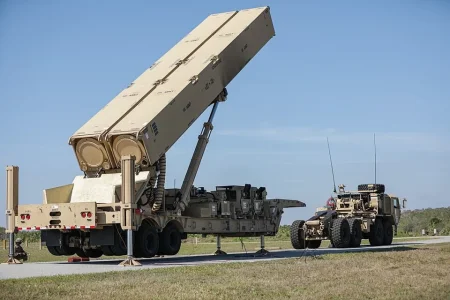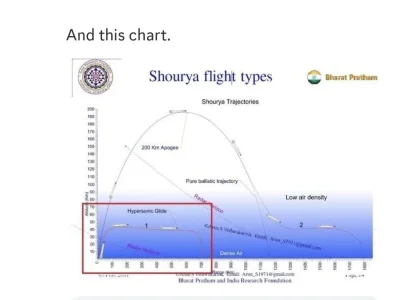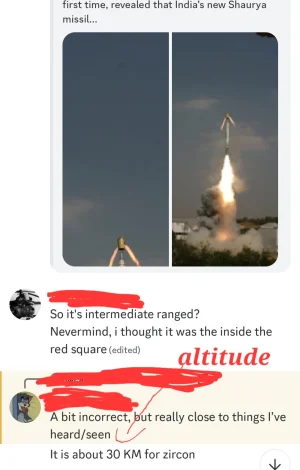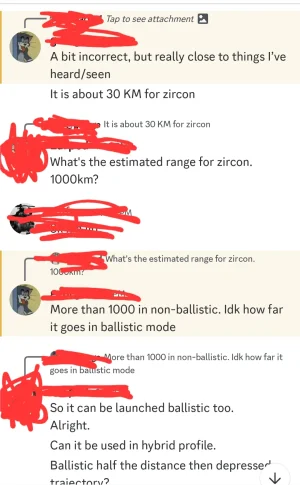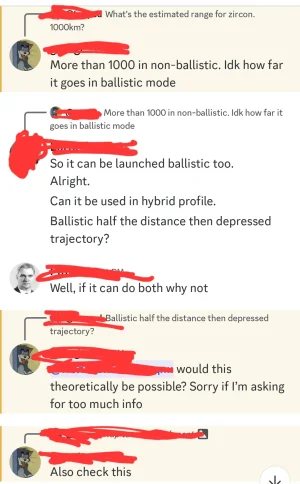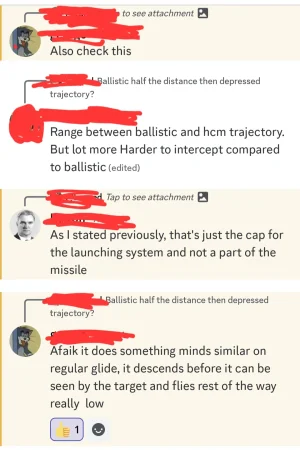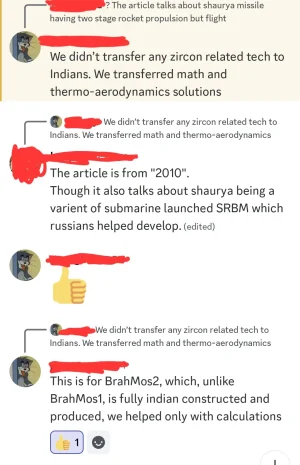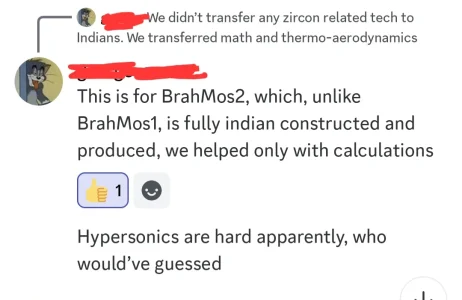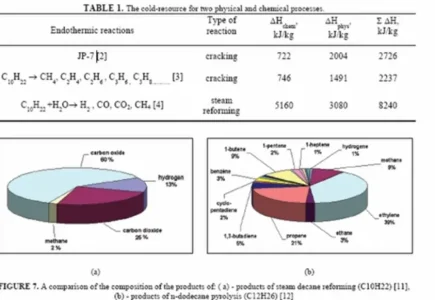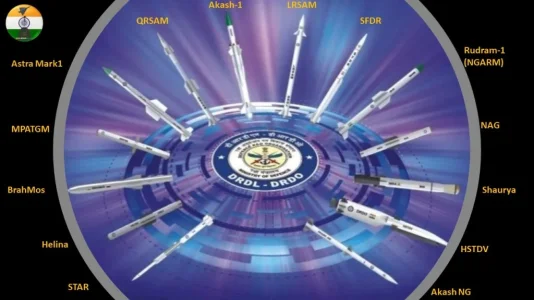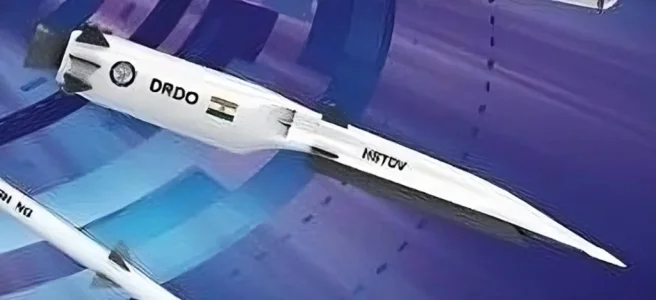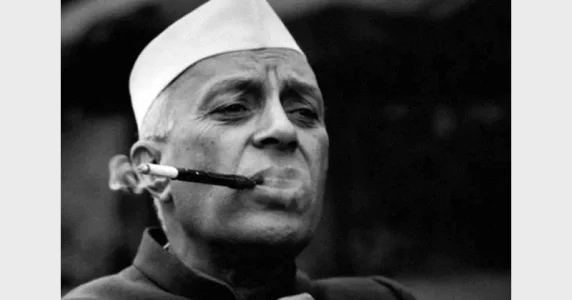- Joined
- Jul 6, 2024
- Messages
- 2,042
- Likes
- 6,033
 *****Naya khulasa*****
*****Naya khulasa*****
This is still related to my previous posts regarding HCM-RS and HCM-AB( scramjet).
But I'd like to correct one thing, it's about range efficiency of scramjets, previously it correlated with both size and weight, that's what I wanna correct, it's mostly correlated with "weight" not size.
Now weight matters a lot in case of carrying the missiles in "planes" so HCM-AB( scramjet) is still Ideal for it.
For for "ground" and
now "SHIP" based missiles.
Weight is not that big of a problem.
Even with higher weight of HCM-RS compared to HCM-AB, it's till in single digits in terms on tons, if it's gets pa's 10ton or more then problem would start.
In that case you can't fit more no. Of HCM-AB onto a ship compared to HCM-RS because size of both will be similar.
Now you may wonder why? Let's understand it.
 with booster has length of ~9m and width of 0.6-0.7m at thickest ton.
with booster has length of ~9m and width of 0.6-0.7m at thickest ton.Shaurya missile has length of 10m and width of 0.74m at thickest.
So in terms of dimension/space occupied both missiles are similar with shaurya being slightly bigger.
But here's the catch brahmos has weight of 3 tons while shaurya had weight of 6+tons.
Shaurya is Similar in size but twice the weight of brahmos.
And in depressed glide trajectory(hcm) it gives max range of 600-800km.
While brahmos with max range of 800km was tested recently too.
So air-breathing ramjet of brahmos is definitely more efficient in cruising than rocket motors of shaurya because a 3 ton missile has similar range as 6+ton.
But here's the thing, both missiles have similar size and similar range.
So the penalty in inefficiency of rocket motor compared to air breathing is in "weight" not in size.
Them there's the American x 51 wave rider scramjet prototype, with length of 7.6 Meters and width of 0.6-0.8m, but carried by b52 at an altitude of 15km then released and climbes farther up in altitude, if we wish to launch to it from " ground" then booster needs to be become more bigger and total length will reach 9+meters.
So in same size range as brahmos and shaurya.
And "max range" of x51 waverider scramjet hcm prototype american is targeting is 700-800km.
So similar max range as shaurya and brahmos.
So 3 missiles, similar dimesion, similar max range,
But weights of all three missiles are different.
X51 weighs around 2 ton(~ 2.5 if that extra booster I'm talking about is attached or more bigger payload Is targeted).
While shaurya again weighs 6+tons.
So if we were to put x51/our own indigenous scramjet hcm in ships it would take same amount of space as shaurya missile.
And extra weight unlike planes is not a big problem for ships( still in single digits of tons) and will provide similar range as shaurya missile.
So basically what i'm saying is to develop a ship based HCM-RS based on shaurya missile.
Just like how Russians developed zircon.
The penalty of inefficiency of propulsion can be forwarded to weight and achieving similar range as an scramjet HCM of same size.
Now if you are wondering how can a missile similar in size weight twice as much or thrice as much.
The answer is extra avaliable space, rocket motors are lot more compact than scramjet engines, second scramjet engines need lots of empty space for air to pass, So all the extra space avaliable due to rocket motors can be filled with high energy dense solid fuel.
And while in theory scramjets can use "solid fuel" But right now american x51 uses liquid fuel( lot less energy dense than solid fuel) while high energy dense solid fuel for rocket motors is available for decades.
So most of the extra weight of HCM-RS compared to HCM-AB will be extra fuel carried in similar size to achieve similar range while flying similar trajectories( also HCM-RS due to no need to maintain proper airflow to engine can be designed to be more maneuverable plus more space is also present for electronics + bigger warhead useful against large ships like aircraft carrier)
So scramjet project while good for airforce/carried by plane.
But for ground and "ship" based HCM we should just use shaurya as a base and create a zircon like HCM to be fired from our ships.
Last edited:



